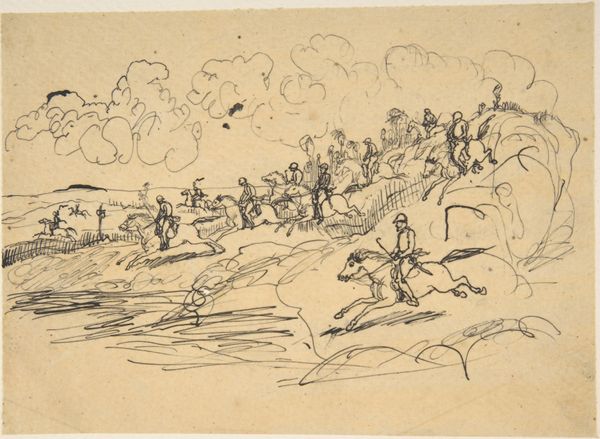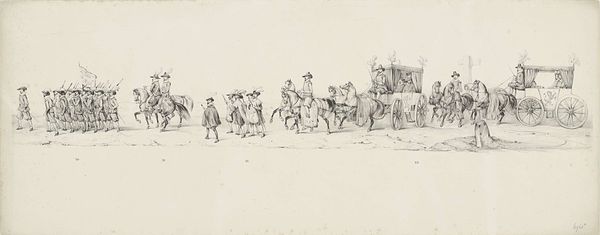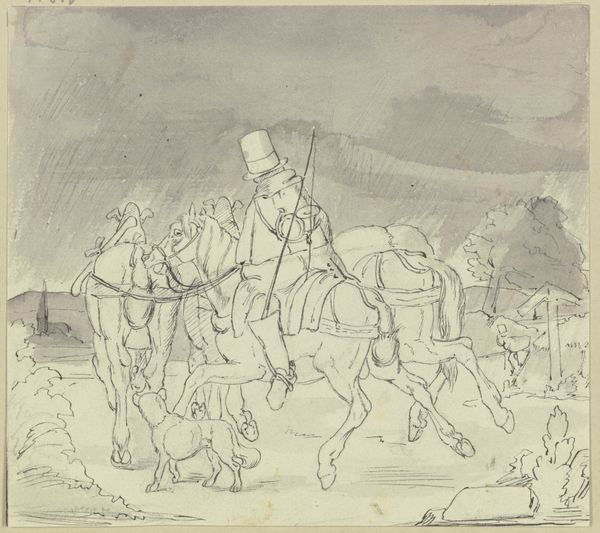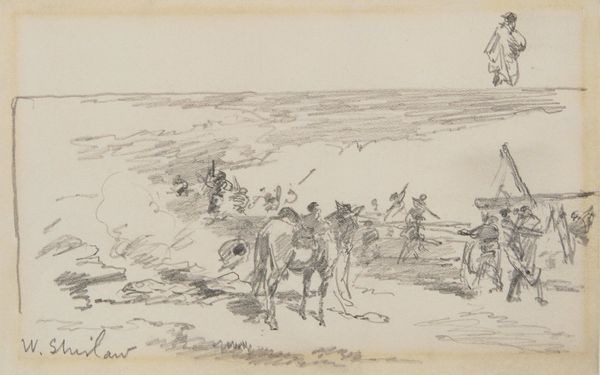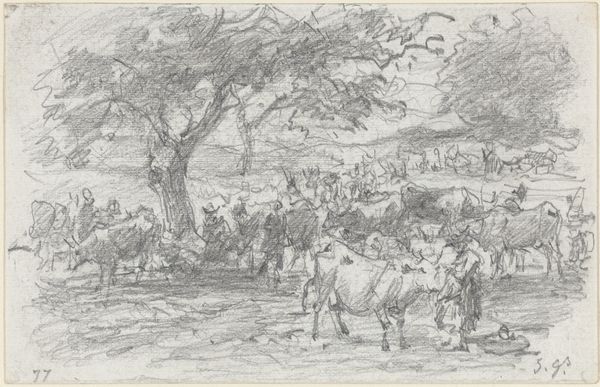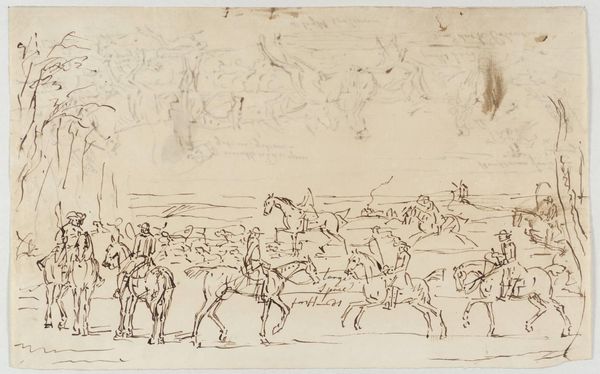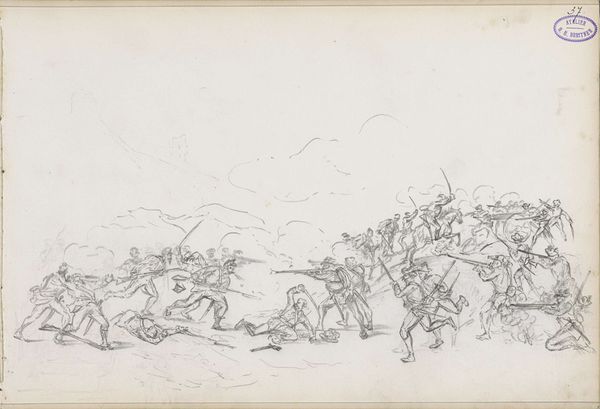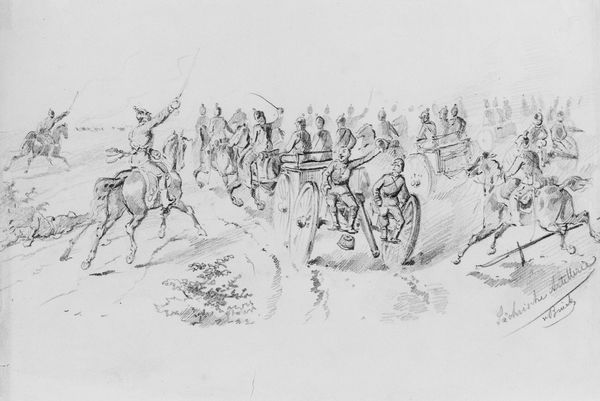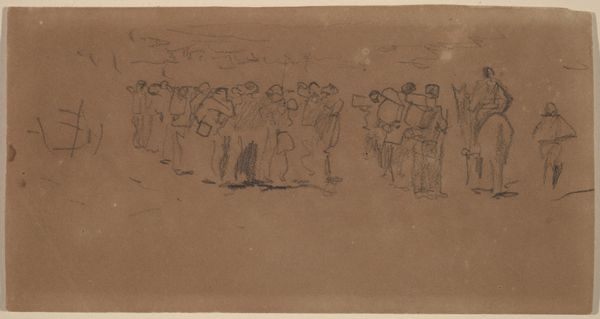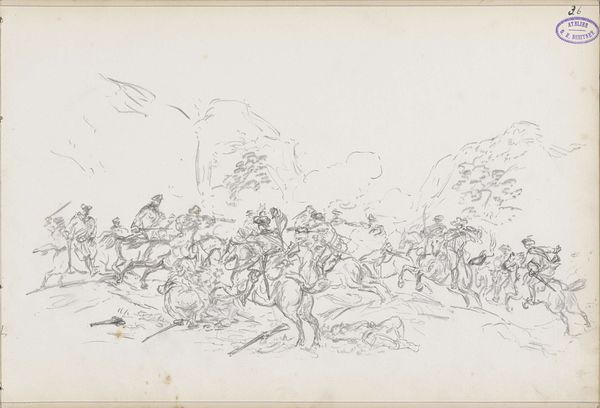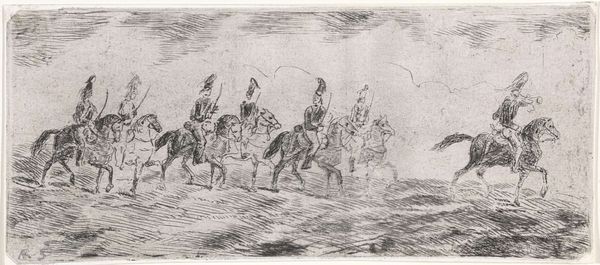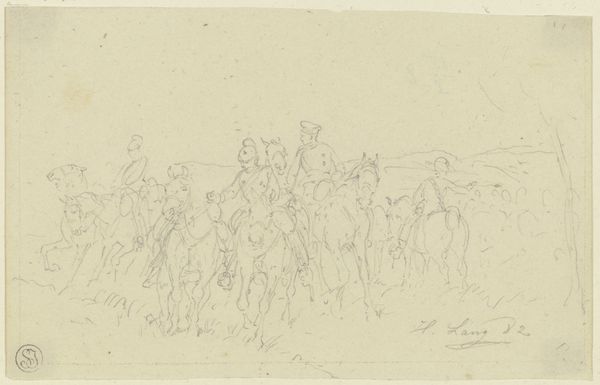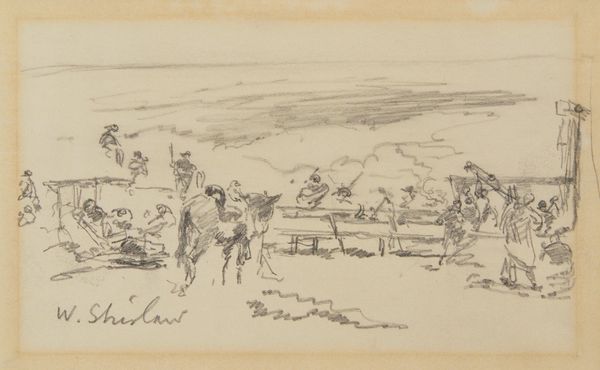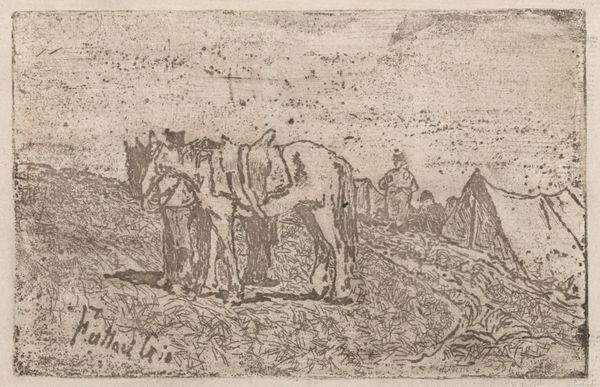
drawing, graphite
#
drawing
#
landscape
#
graphite
#
realism
Dimensions: 4 1/2 x 7 1/2 in. (11.43 x 19.05 cm)
Copyright: Public Domain
Curator: Walter Shirlaw's "Sketch Made on Indian Reservation," likely from the late 19th century, rendered in graphite pencil, presents such a compelling moment of pause. What's your initial impression? Editor: A sort of desolate stillness, almost suspended. The scene has a feeling of weary anticipation—the landscape sketched sparely, under what seems like a heavy, bright sky, and the animals waiting, heads bowed. Curator: It's striking how Shirlaw uses graphite to convey light in this landscape, isn't it? The way the shading emphasizes the plains stretching far into the background—quite typical of realist landscapes depicting the American West at the time. This piece really underscores the visual strategies artists employed when trying to depict expansiveness. Editor: And the weight of expectation on those pack animals. Each laden mule seems lost in its own world. It really brings to mind those debates about what's included or excluded from landscapes in museums—whose story are we really seeing? I mean, the sketch tells a specific kind of frontier narrative. Curator: Exactly. And it's interesting to think about how the act of sketching, itself, becomes part of the narrative. As if Shirlaw is rapidly documenting a world he perceives as fading—or perhaps one that’s being actively reshaped around him by forces both seen and unseen. Editor: Absolutely. This kind of direct, unvarnished approach captures not just a visual scene, but a specific moment of socio-political flux—where perceptions and representations of Native lands are being rapidly defined and distributed. It's fascinating—if melancholic—to think about art's role then, and now, in mediating our understanding. Curator: Perhaps, too, how the medium itself—a simple sketch—mirrors a kind of provisionality, like Shirlaw felt he could only capture fragments. I feel like there's also a beautiful simplicity here—nothing feels overtly performative, which makes me keep circling back to that quiet anticipation we were talking about. Editor: Right. A lot to unpack there. Well, I'm now sitting with new questions, a slightly shifted perspective on representations of the West and the loaded spaces embedded in such seemingly simple scenes. Thanks for that.
Comments
No comments
Be the first to comment and join the conversation on the ultimate creative platform.
